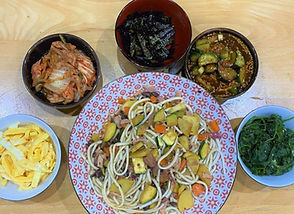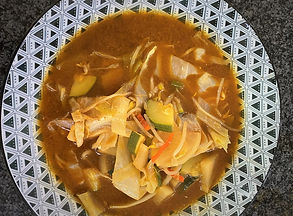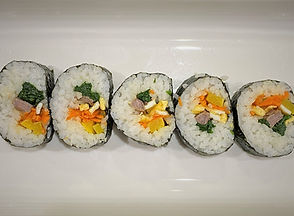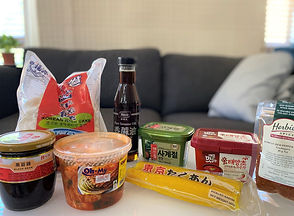South Korea
In 668 CE (Common Era) the three separate kingdoms of Koguryo, Paekche and Silla were unified by Silla who occupied the South East of Korea. During the Koryo Dynasty (918-1392) it gained independence from China, and developed its own language and culture. However, up until 1896, Korea was part of the Chinese “tribute system” which gave regular gifts to the Chinese emperor.
At the end of the 16th century Korea was invaded by Japan and in the early 17th century by the Manchus of North East Asia. After this they became a “hermit” kingdom, cutting themselves off from the rest of the world to prevent attack and the entrance of Christian missionaries.
At the end of the 19th century, Japan, China and Russia exerted their influence over Korea. Korea defeated China and Russian during a war between 1895 and 1905, with Japan becoming the predominant power over the peninsula. In 1910 Korea was annexed as a colony of Japan, and for 35 years Japan ruled Korea, during this time they attempted to wipe out their language and introduced industrialisation to Korea. During this Japanese colonial era, Korea saw an influx of Japanese dishes and seasonings including Tonkatsu, Sushi, Oden (One-pot dishes) and Curries. The first Japanese factory producing soy sauce was also established in Seoul in 1910. The Korean version of ramen appeared in 1960’s, called “ramyeon” in Korean, showing the influence that the Japanese had on Korean food.
As a result of Japan surrendering at the end of World War II, Korea was split into two states - the Democratic People’s Republic of Korea (D.P.R.K.) in the North and the Republic of Korea (R.O.K.) in the South. The USSR occupied the North and USA the South.
In 1950, North Korea, backed by the USSR invaded South Korea to attempt to unify the country, but this was thwarted when the United Nations led by the US came to the assistance of South Korea. In July 1953, the Korean War came to an end and the two states remained separated using a 240km Demilitarized Zone (DMZ).
Today, almost the entire population of South Korea is ethnically Korean, with a very small number of Chinese permanent residents.
As a result of their history, many foods were introduced to Korea from China and Japan. For example, rice and cabbage as well as domesticated animals such as pigs, cows and fowls were introduced from China, in addition to chopsticks, which were developed in the Chinese Han Dynasty (200BC-200AD).
South Korea’s geography has also contributed to its food. South Korea is bordered by three Seas - the East Sea (or Sea of Japan), the East China Sea and the Yellow Sea. This means seafood features in their diet with three main seafoods consumed regularly - dried sardines (eaten with almost every meal including breakfast), dried cuttlefish (a popular snack) and seaweed.
The terrain is very mountainous with narrow coastal plains and small valleys. As a result, there is not much grazing land so red meat is eaten in smaller quantities. Rice, beans, and vegetables are grown in the valleys. Korea has wet humid summer months and dry cold winter months, for this reason fermentation is a popular method for preserving foods which can then be eaten during Winter. The most famous of these dishes is Kimchi, and is typically served with each meal in conjunction with other Banchan (side dishes). Soybean paste and chili pastes are also other examples which are used in many of their popular dishes.
Many of the Korean dishes are served with kuk (broth), bap (rice) and banchan (side dishes) and these are seasoned with jang (fermented soy products) or sesame oil. Unlike other countries, baking or frying methods are not commonly used, with fermenting, blanching, boiling, pickling, and seasoning methods preferred.
Eastern Asian Recipes | Asian Food | Shopping Lists
Cook a week of South Korean meals
The menu
Meal 1
Bibimbap and Banchan
Meal 2
Jjajangmyeon and Banchan
(Black Bean Noodles)
Meal 3
Tteokbokki and Banchan
(Korean Rice Cakes)
Meal 4
Haejangguk
(Hang-over Soup)
Meal 5
Gimbap
(Korean sushi rolls)
Download the shopping list to get all the ingredients to cook five meals. Then click on each of the links at the bottom of the page for a history of the dish, a list of ingredients required for the dish and video instructions on how to make the dish.
Eastern Asian Recipes | Asian Food | Shopping Lists
Meal 1
Bibimbap and Banchan
Meal 2
Jjajangmyeon - Black Bean Noodles with Banchan
Meal 3
Tteokbokki - Spicy Rice Cakes with Banchan
A "mixed rice" dish - a number of banchan (side dishes) are made and added to the rice. The dish is topped with a cooked egg. You will complete the preparation of the Banchan for the week (for meals 2 and 3 as well) as you prepare this dish. Banchan will include Bulgogi (marinated meat), pickled cucumber, soy and sesame spinach, shredded nori and egg omelette, these will be combined with store bought Kimchi (the most famous of the banchan).
Start this dish the night before, to marinate the Bulgogi and make a couple of the banchan dishes.
A quick to prepare noodle dish made with Chunjang, a black bean paste. The noodle dish includes bacon, carrot, potato and zucchini, and is served with banchan made when cooking Meal 1.
This is a mild version of Tteokbokki called Gungjung Tteokbokki. Tteokbokki includes Korean rice cakes, marinated beef and vegetables served with a sauce. This dish is served with any leftover Banchan from the previous nights.
Meal 4
Haejangguk - Hangover Soup
Normally eaten the morning after a big night, this still makes a delicious dinner. The soup includes a beef stock base flavoured with doenjang, a fermented bean paste. The soup also includes vegetables.
Meal 5
Gimbap
Similar to the Japanese sushi rolls, however these seaweed and rice rolls are seasoned with sesame oil instead of vinegar and include different fillings.
Start this dish in the morning or the night before by cooking the rice and marinating the meat ready.
South Korean Ingredient Guide
Some ingredients you may not be familiar with.







